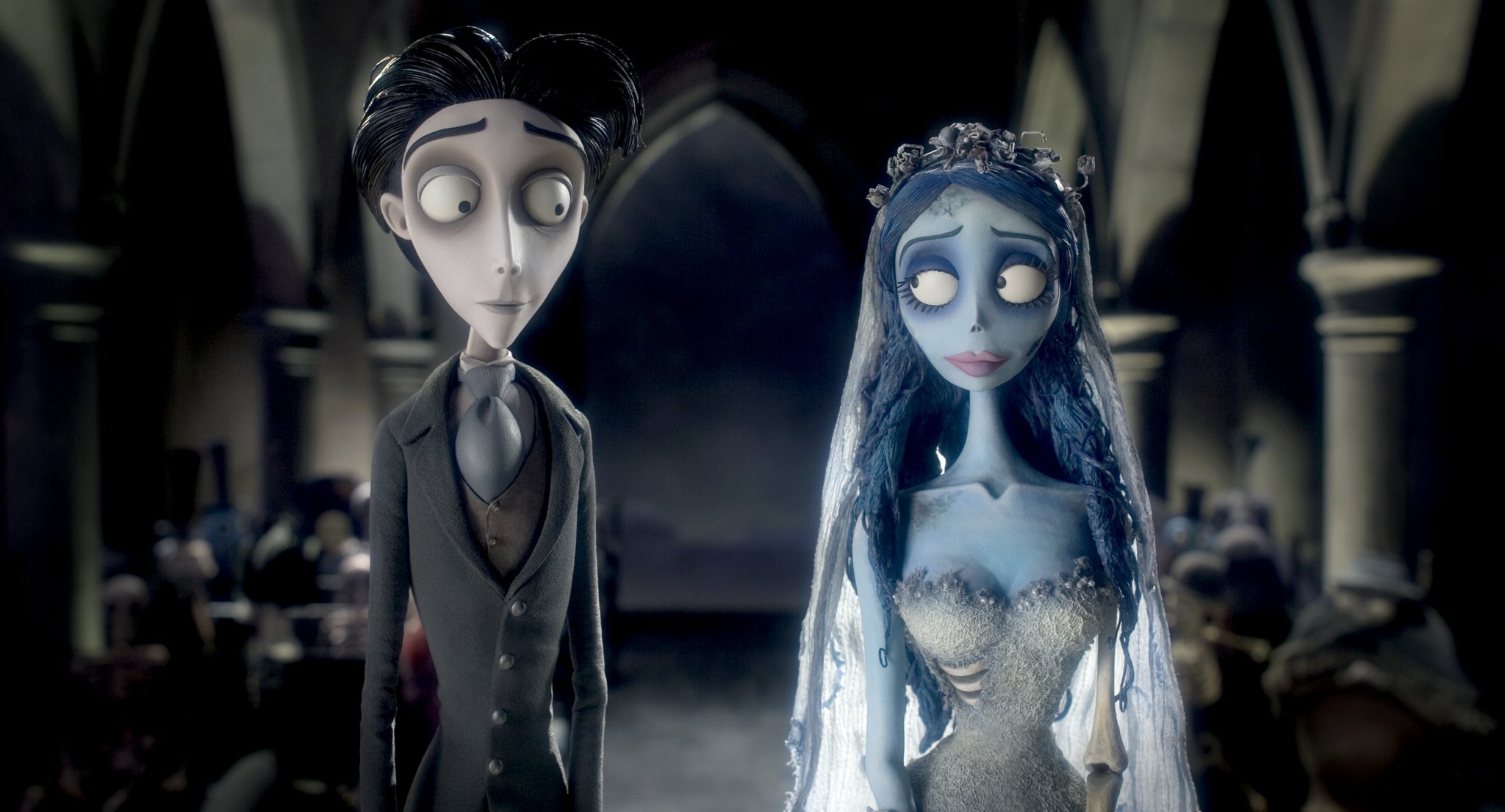Corpse Bride: May I Have This Dance (of Death)?
Halloween is not exactly a celebration of death, but tying the two together is still a common practice. Although the holiday calls for festive activities and events, death itself is hardly anything to joke about. Besides birth, death is one of the only universal experiences we all undoubtedly share as human beings. It marks the ending of life on earth, and virtually nobody knows what will come next.
“Die, die we all pass away”, cry the dead in Tim Burton’s Corpse Bride.
Far from somber, these cries are joyous… and accompanied by an upbeat jazz orchestra. Death is the farthest thing from an untrodden territory in Corpse Bride, even the title can tell you that. Despite tackling a subject matter such as human’s demise, the movie has a widespread reputation of being a comfort movie.
Set against a backdrop of a grim town, the film opens with a musical number in accordance with an upcoming arranged marriage between wide-eyed Victoria Everglot (voiced by Emily Watson), who hails from a penniless aristocratic family, and awkward Victor Van Dort (voiced by Johnny Depp), a son of wealthy fishmongers. The marriage would benefit both families, providing the Everglots with money and the Van Dorts with status. When the groom-to-be botched the entire wedding rehearsal, he fled to the woods at night to practice his vows.
In the middle of his speech, Victor places a ring on a twig, which turns out to be the hand of Emily (voiced by Helena Bonham Carter), a female corpse. She rises from the ground, donned in a raggedy wedding dress, and takes him to the underworld, where other dead people, like Emily, live. Jubilant celebrations for the supposed engagement between Victor and Emily welcomed them upon arrival.
Now, the world where these dead people reside is portrayed a little differently than what we typically would picture residing post-demise. Instead of a destitute plane of nothingness, Corpse Bride’s Land of the Dead is a classic town that comes equipped with a jazz bar, a lookout point, and the lively skeleton of Victor’s deceased dog. With the music and brightness, the movie’s salute to death is somehow reminiscent of the Danse Macabre.
The Danse Macabre is, simply put, the Dance of Death. It’s essentially a parable where the living and the dead meet to dance as a reminder of not just the certainty, but also the fairness, of death. This theme is not unlike the Latin saying memento mori, meaning “remember that you will die”.
For centuries, the Danse Macabre has been depicted through numerous forms, from paintings to literature to music, with its origins dating as far back as the 13th and 14th century. In these representations, humans, both living and dead, meet one night to dance with each other to commemorate our fragile lives and imminent death. The night begins as the dead rise from their graves into the world of the living. Then by the end, the dead escort all the living to their respective graves. Emperors, commoners, and children, not one life is spared from the curse of death.
The idea of skeletons escorting humans to their eternal slumber might push our anxiety of death further. Be it as it may, the Danse Macabre also portrays the friendly proximity of the living and the dead with one another, pointing to the predictability of life’s finality. It’s like saying death is going to happen, there’s nothing grand about it, and we should all accept it. Mortality simply is.
While the portrayal of the Danse Macabre throughout history has shifted, I like to believe Corpse Bride is itself a portrayal of the Dance of Death. Being catered to audiences of all ages, the film might be expected to tread on lighter themes, but instead doesn’t shy away from bringing up life and death at the core of its plot.
For example, the first time Victor finds himself in the Land of the Dead, he is greeted by the corpses, as they sing “Remains of the Day” (composed by Danny Elfman). Over and over they sing, “You might try and hide and you might try and pray, but we all end up the remains of the day”. It’s like masking a difficult conversation with musical numbers and enchanting stop-motion animation.
There are much lighter moments, though. Near the end of the movie, the dead visit the Land of the Living for a celebration; not the Danse Macabre, but instead for Victor and Emily’s wedding. Madness ensues as the townsfolk become frightened at the sight of the dead walking on earth. But then, they rejoice in reuniting with their lost loved ones.
Besides that, the grimness of the theme complements the movie’s love plot well. Victor, Victoria, and Emily are all victims of tragic love stories. The movie brings a nice balance between melancholy and charm in spotlighting each of their narratives—from heartbreak, to betrayal, to sacrifices.
It’s not that Corpse Bride places death as a glorifying material, instead the opposite is true. Like the Danse Macabre, the movie highlights the strange mundanity of death. If you are looking to celebrate Halloween without the gore, screams, and jump scares, Corpse Bride could be your choice. Everyone is welcome to dance along.
But remember you will die.
